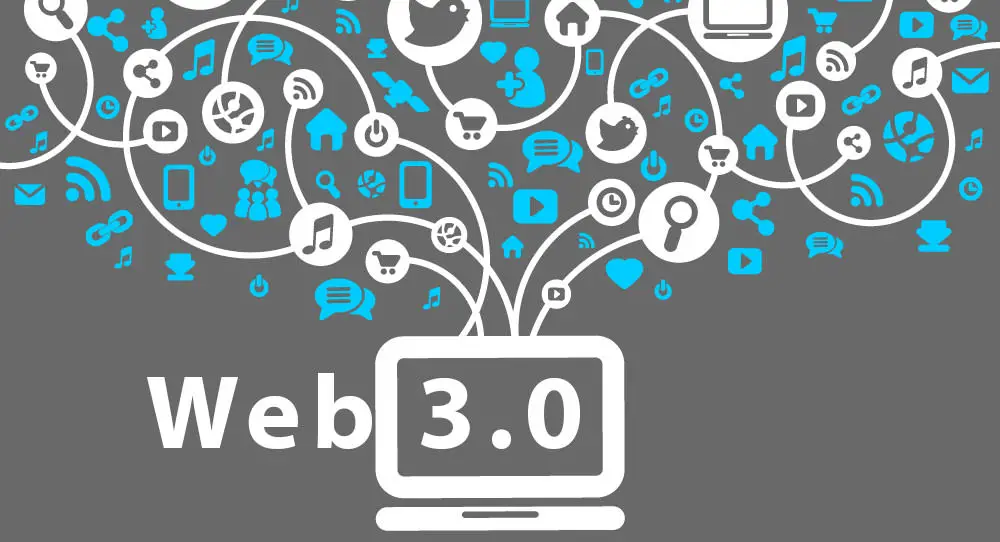
Web 3.0 Blockchain is a true revolution that has unfolded in the corners of the world wide web after establishing itself as a significant Blockchain technology trend. Web 3.0 is preparing to change how businesses operate, and internet users interact with the digital world, thanks to the most disruptive technology of our time. In this article, we will look in-depth at Web 3.0 Blockchain – what it is and its effect on the blockchain industry.
Web 3.0 technology provides a fair and transparent network where people can interact without fear of losing security or privacy. The web version will be intelligent on the internet by combining the power of artificial intelligence and Big Data – all while making the web semantic.
Web 3.0 is the period in which Blockchain will power the web to become more human. Blockchain will revolutionize how data is collected and managed across the internet. With the help of Al and LoT, the technology will bring together all the concentrated data and convert it into information that cannot be hacked or duplicated.
The impact of web 3.0 on businesses will make them more transparent and user-centric. Everything wrong with how companies run in terms of user data will revolutionize. To answer how businesses will use web 3.0 technologies, both traditional and new, companies will open the doors to Blockchain and the capabilities it brings. Your apps will receive a Blockchain upgrade, making everything transparent and accessible to all.
To achieve everything expected of Web 3.0 Blockchain, many technologies will have to unite and rise to the fore, implying that integrating blockchain technology will not suffice. The most important components of Web 3.0 will be the emerging technologies of our time to make the web decentralized and semantic.
• With augmented and virtual reality and high-resolution 3D graphics, the digital web’s user interface will merge with the physical, natural world. The gap between the digital and physical environments will be closed, and we will bring physical objects into the digital world and digital things into the physical world.
• With the Internet of things devices connecting to ever-more advanced networks such as 5G, the Web will become ubiquitous via internet-connected computer interfaces of physical objects. Everything will be internet-connected, from phones to watches, cars to drones, refrigerators to ovens.
• Computers will analyze and learn on the fly using artificial intelligence technology to provide user-centric interactions. Chatbots on the front end and machine learning algorithms on the back end will make the user experience more relevant and semantic by analyzing structured and unstructured data sets.
Web 3.0 features will include pro-privacy and anti-monopoly models. It will not incentivize centralized platforms that keep control over users’ data. We will see a shift with decentralization and privacy at the forefront. With users controlling how their data is viewed, the monopoly of tech behemoths will be broken, and there will be few to no cases of data privacy violations.
Web 3.0 will be far more secure than its predecessors. Because of the network’s decentralization and distributed nature, hackers cannot penetrate it without the operation being traced back to them.
Until now, user data was managed and used by tech behemoths. End users will have complete data ownership with Blockchain-powered Web 3.0. Data transmitted over the network will be completely encrypted. Users will choose which information they want to share with corporations and advertising firms and earn money from it.
Web 3.0 features enable users to access data across multiple applications without being restricted to a single platform. This means you won’t have to worry about one device having access to Web 3.0 while others don’t.
Permissionless Blockchain Web 3.0 will not require a central authority. Anyone can join and take part in the network by creating an address. This will eliminate the possibility of users being barred based on gender, income, orientation, geographical location, or other sociological factors. It will also allow digital assets and wealth to be transferred quickly and cost-effectively.
Web 3.0 will change the way we interact with the digital world, and the change will affect more than just individuals. The impact of Web 3.0 blockchain on traditional and disruptive businesses will be massive. However, while Web 3.0 is in the future, companies must begin preparing now. Allow SmartOSC blockchain experts to assist you.
Increased acceptance and knowledge sharing have aided the spontaneous growth of cryptocurrency over the last…
Blockchain can be intimidating to research, but attending cryptocurrency events is one of the best…
Blockchain has made inroads into all major industries and is also becoming a part of…
In recent years, blockchain lending solutions have grown in popularity as a way to earn…
The scalability trilemma is still one of the blockchain's most pressing issues. Here are some…
Many people are looking for ways to get involved in the crypto world as the…